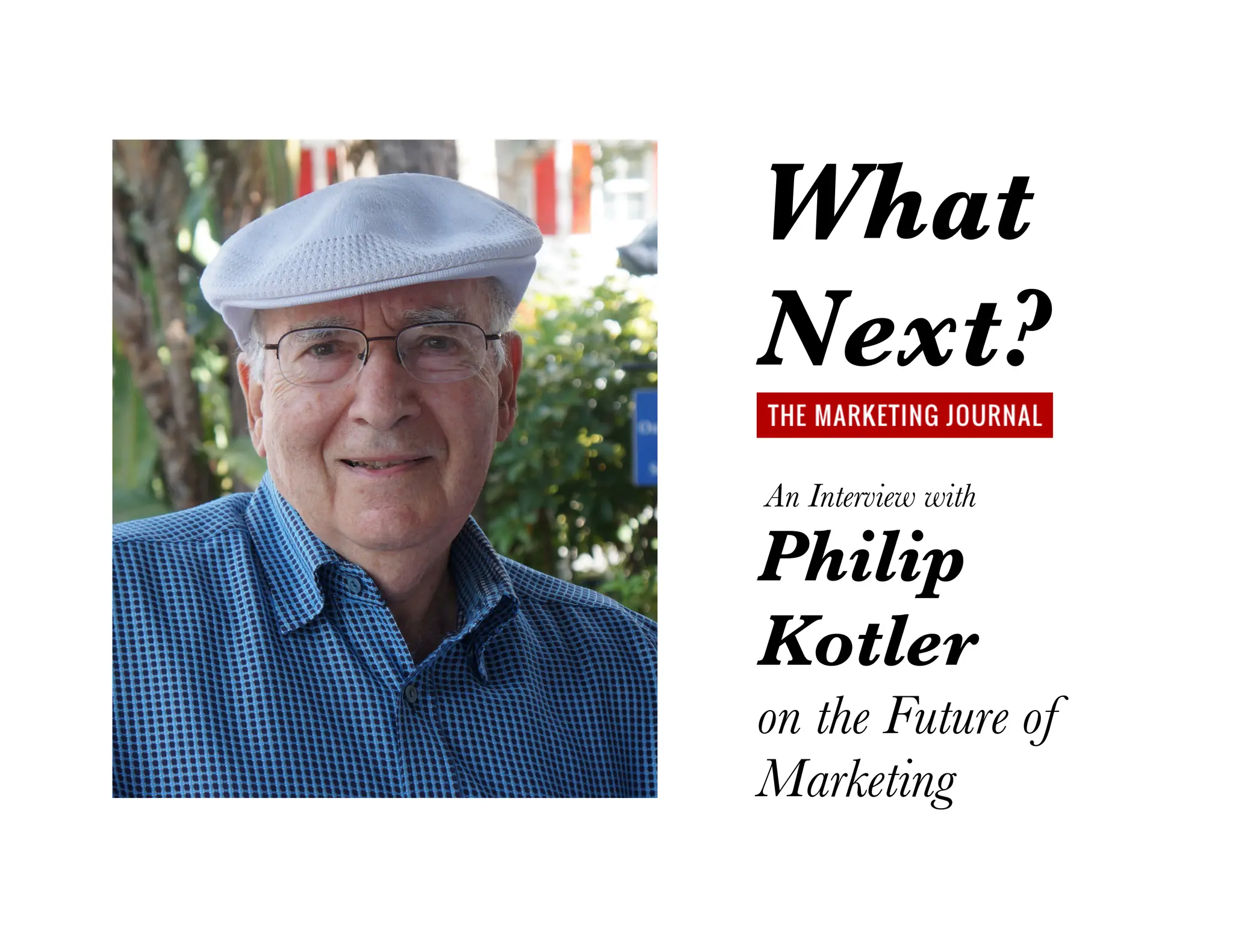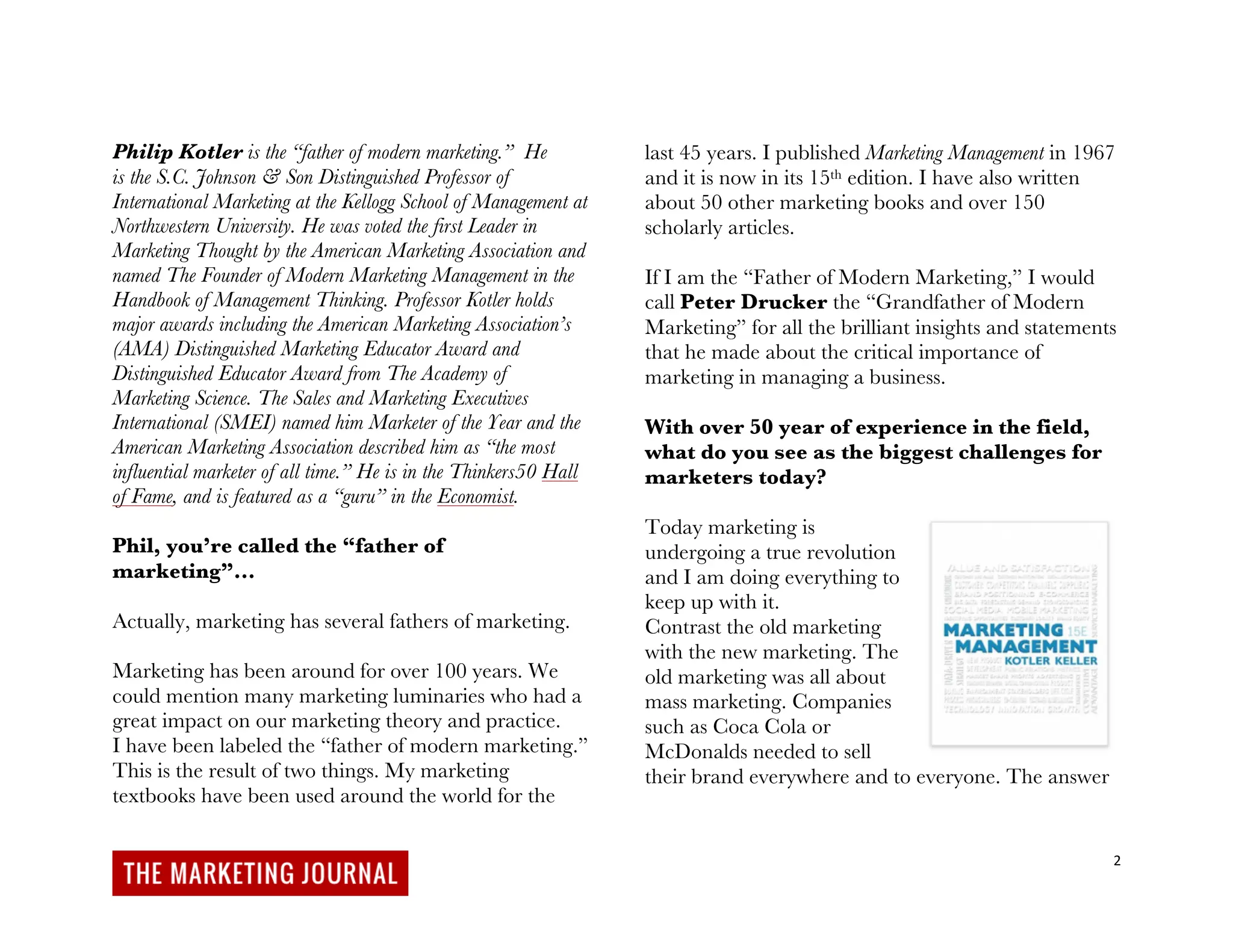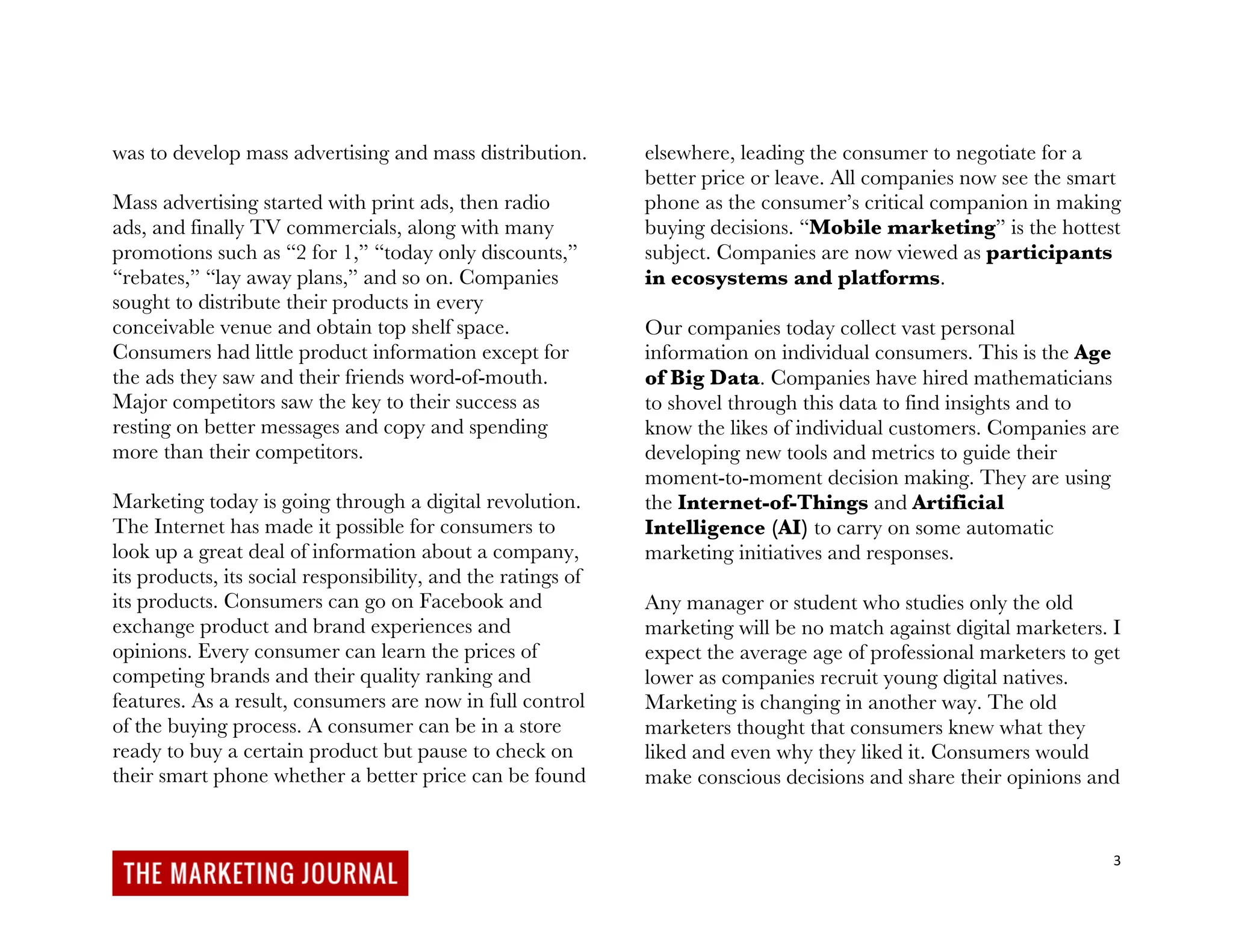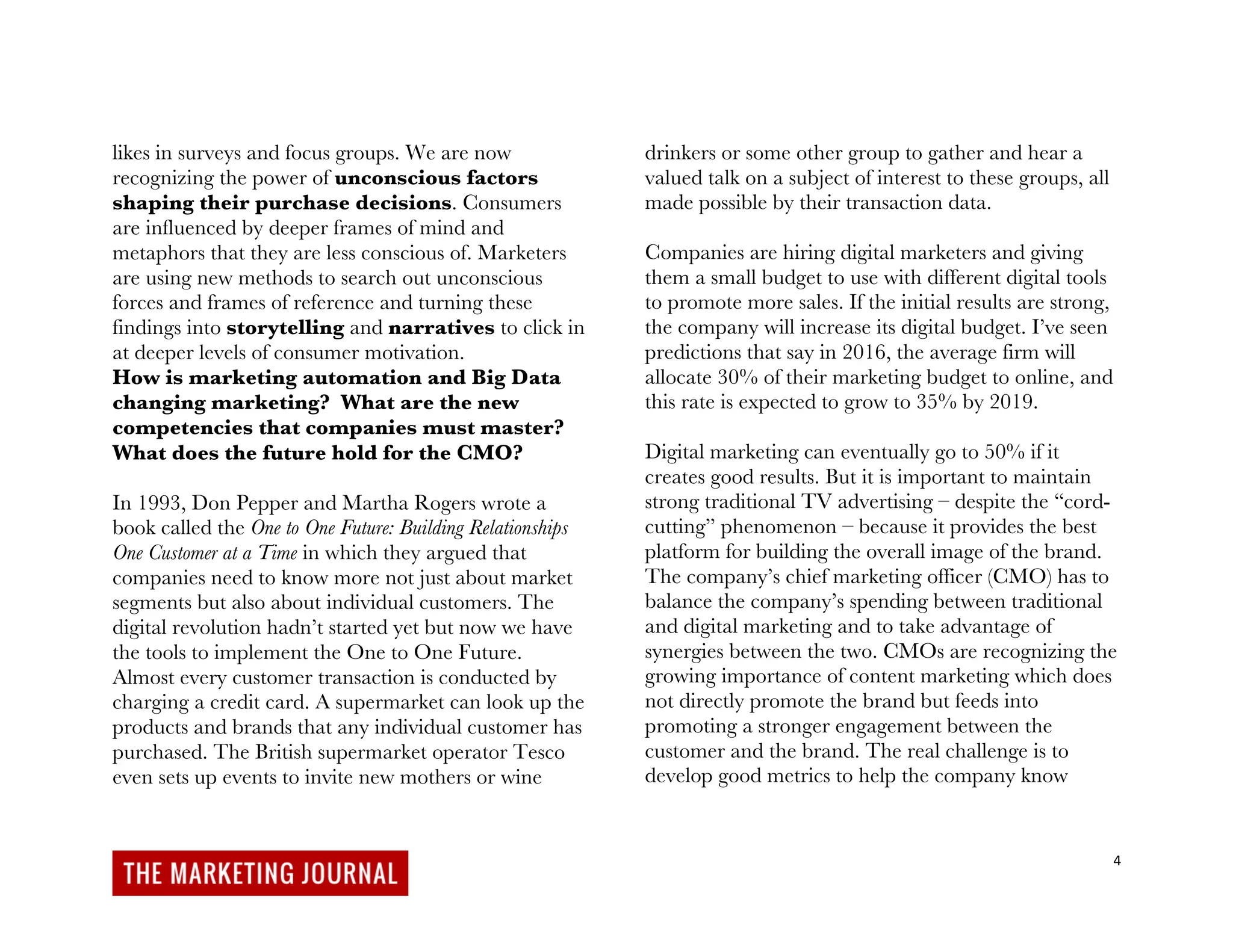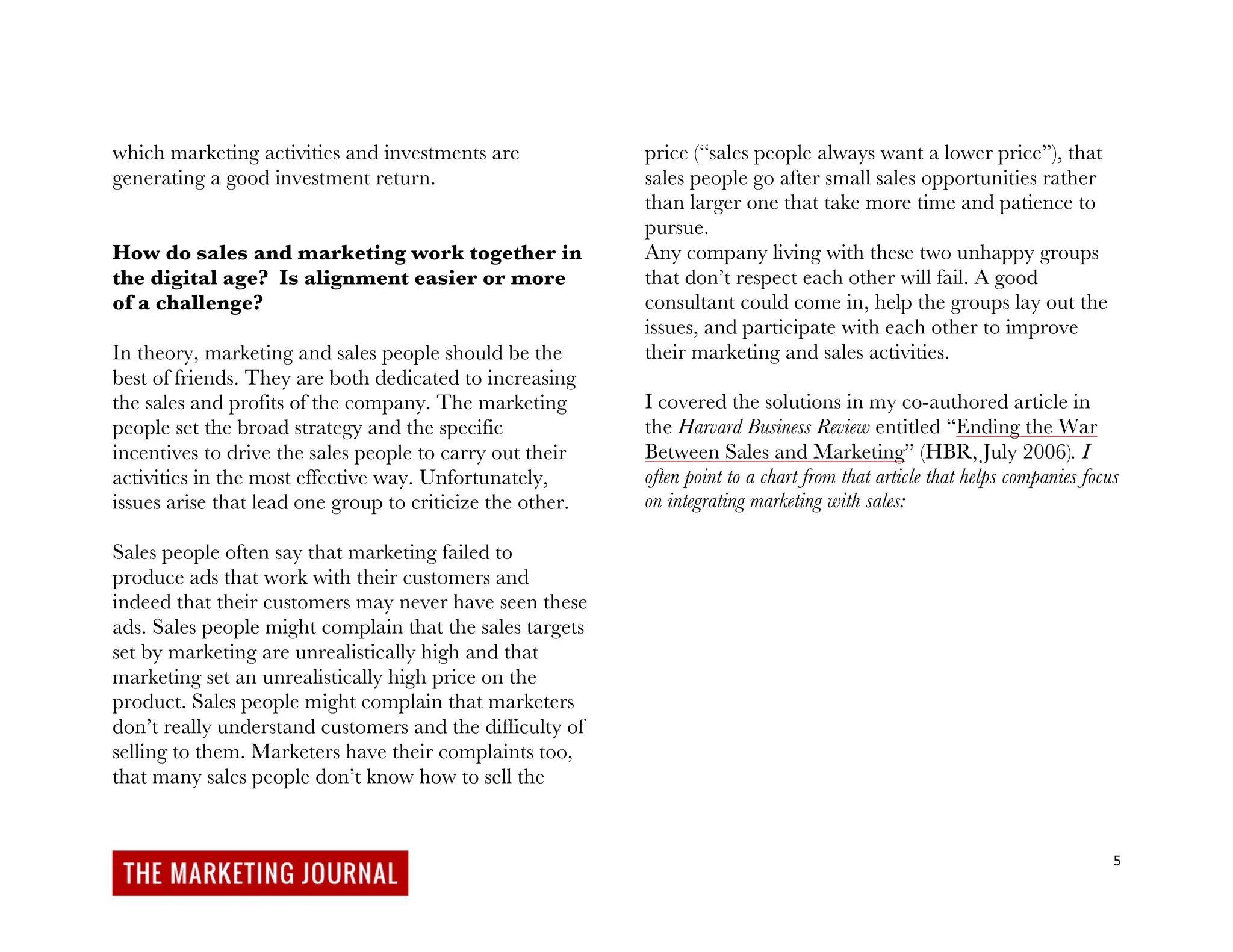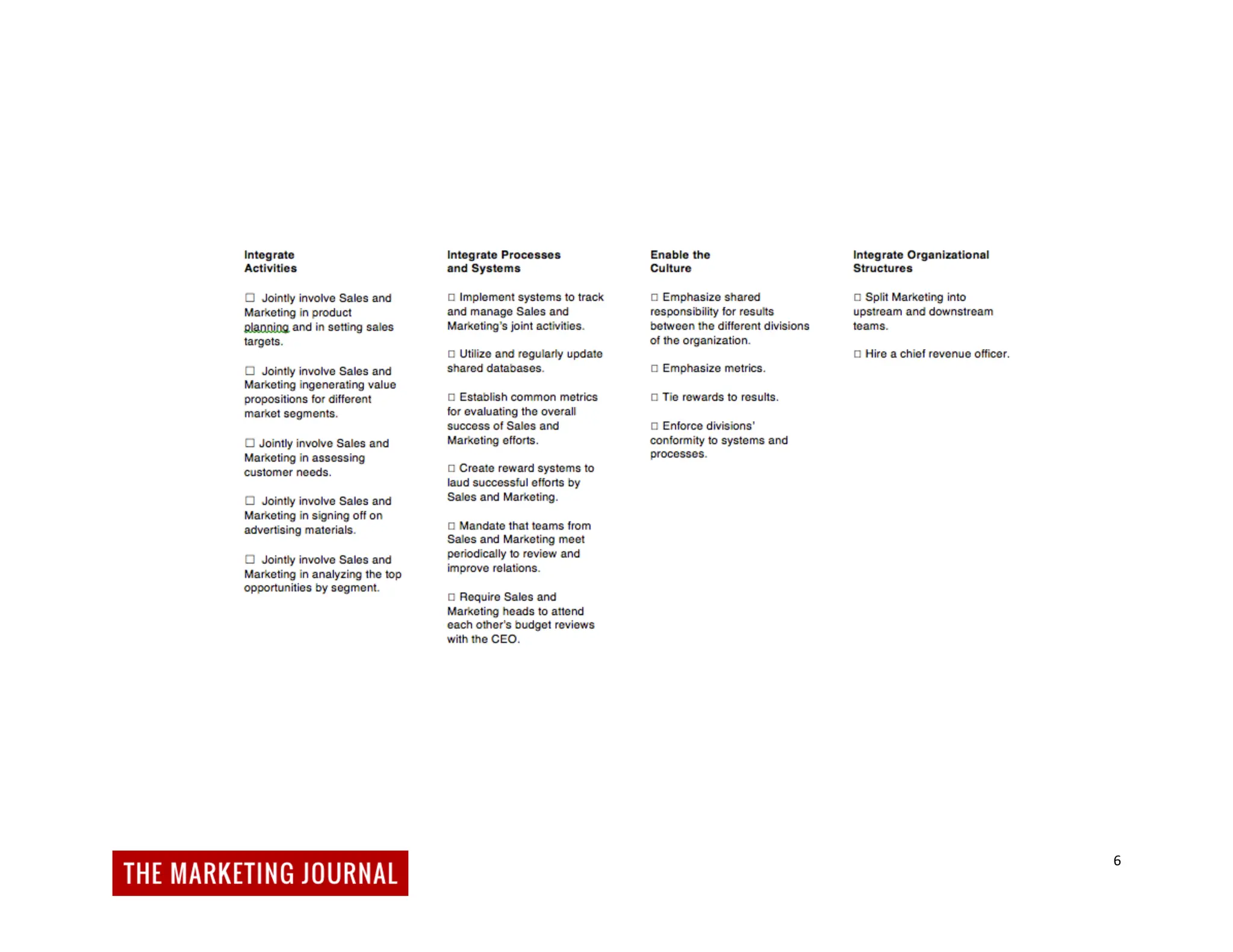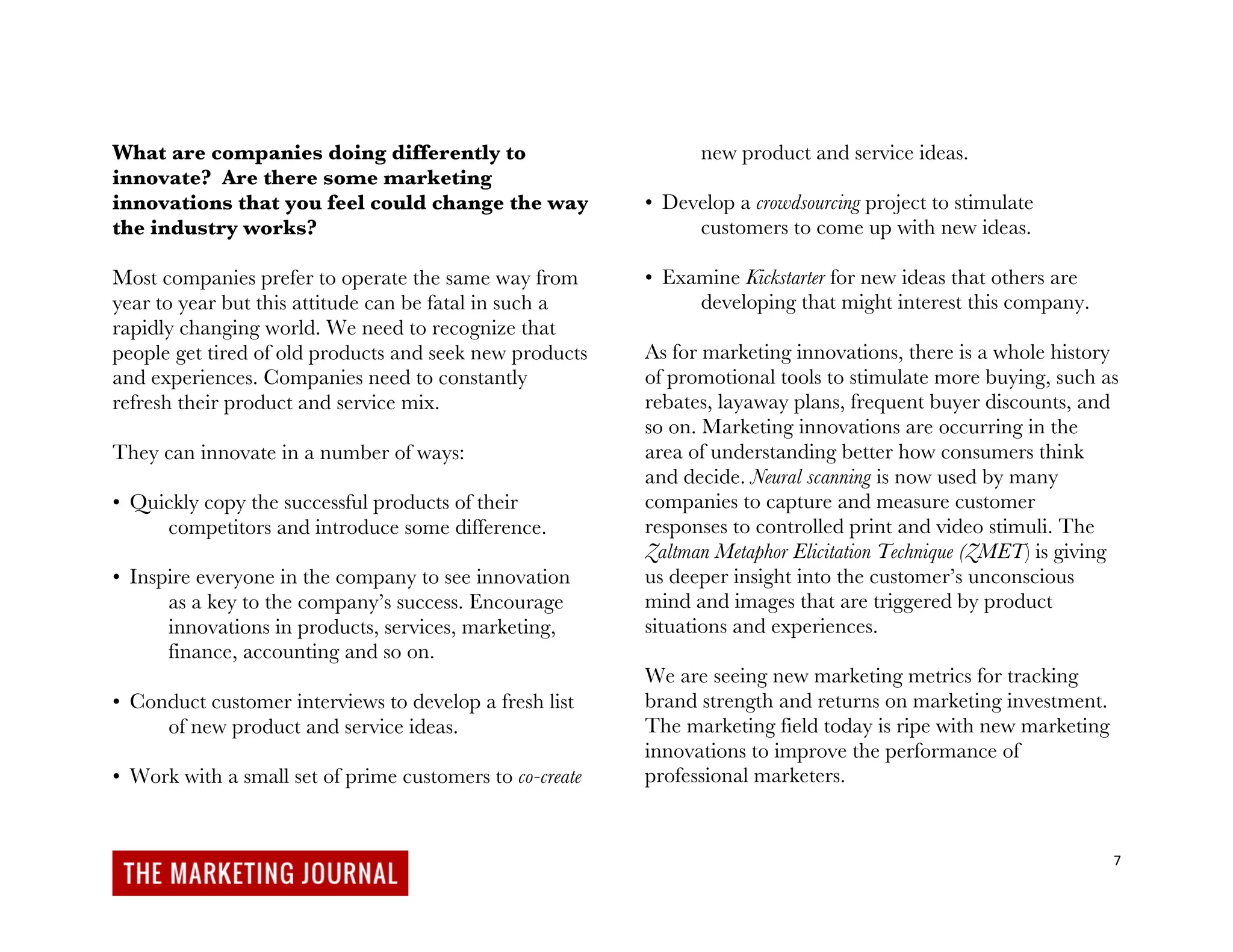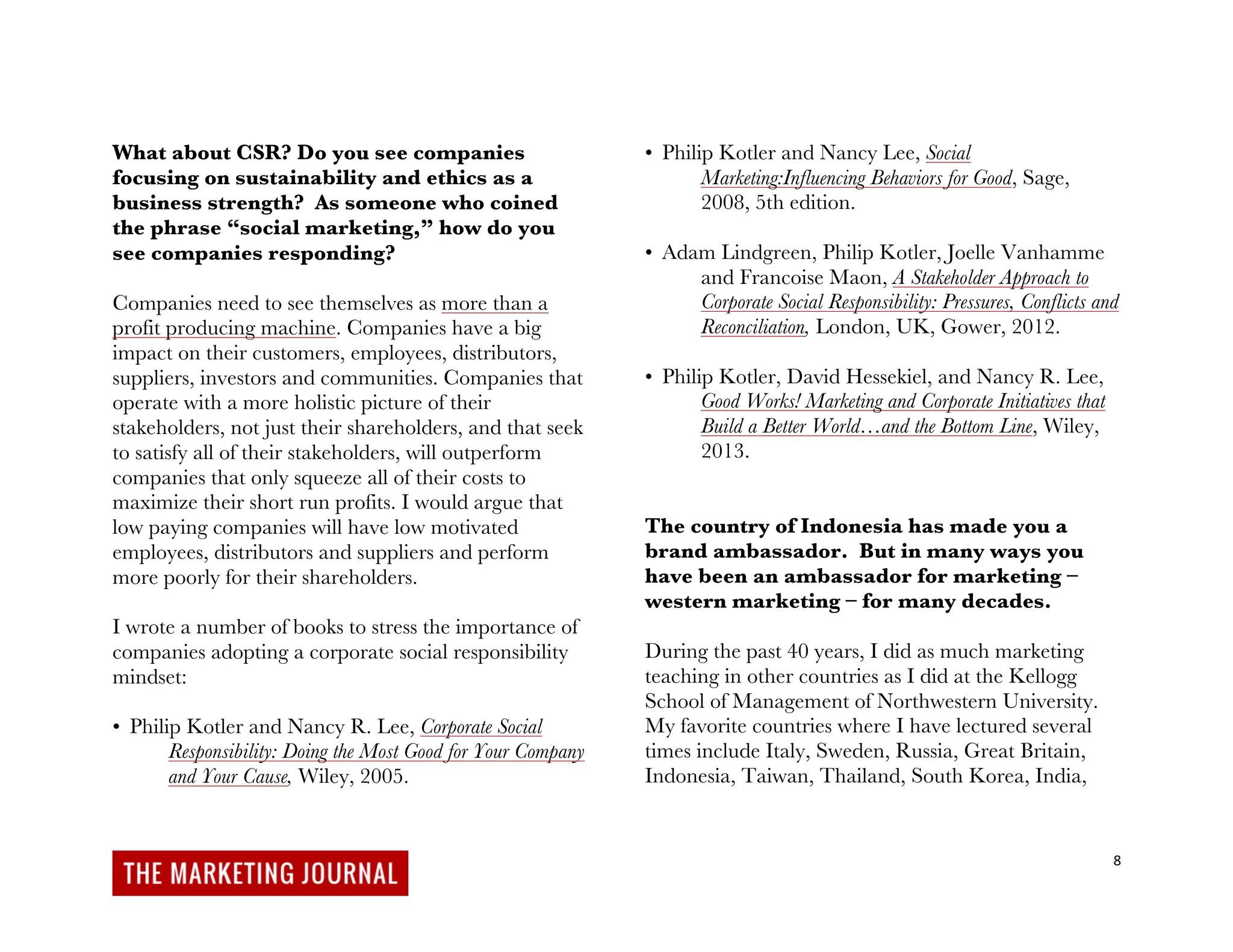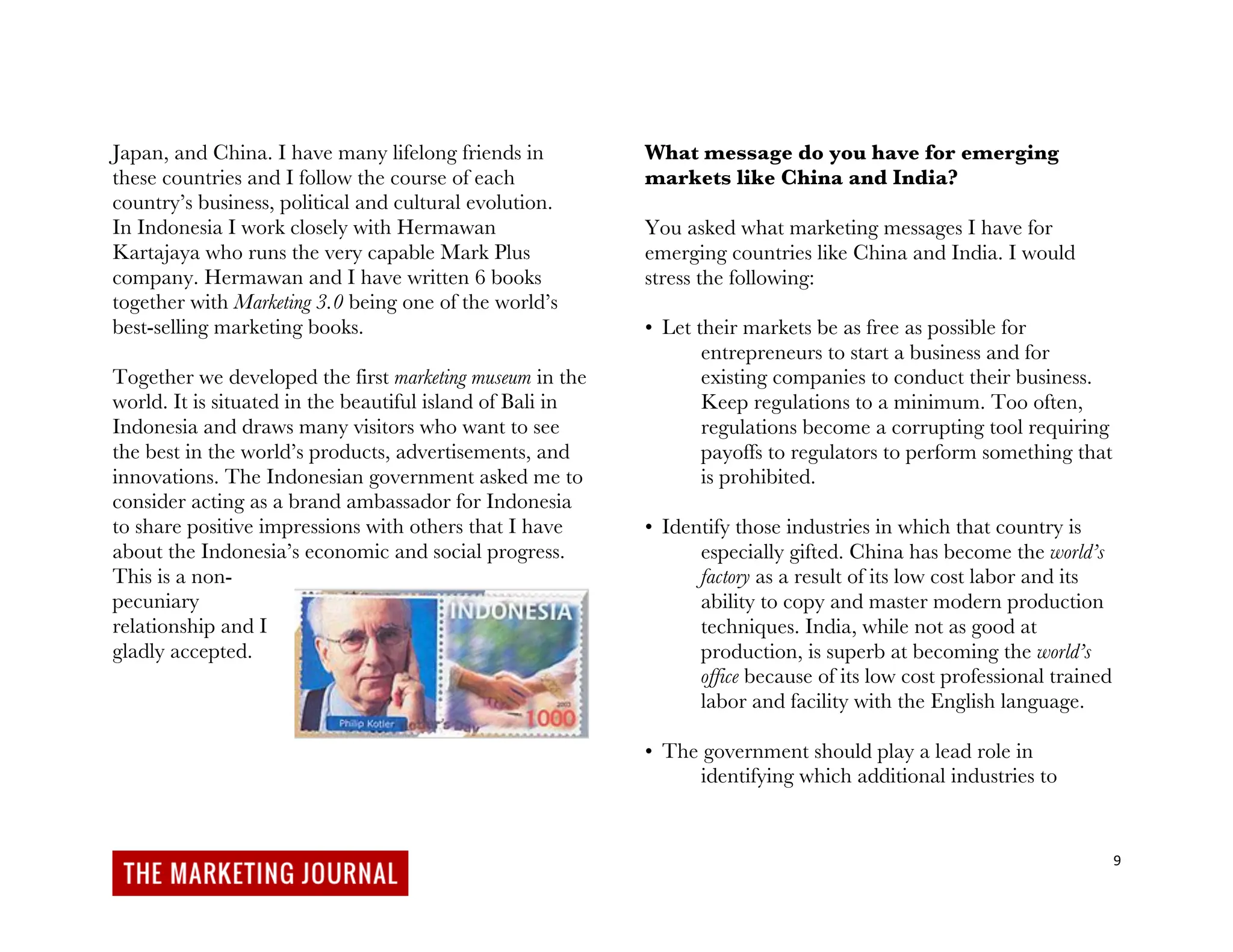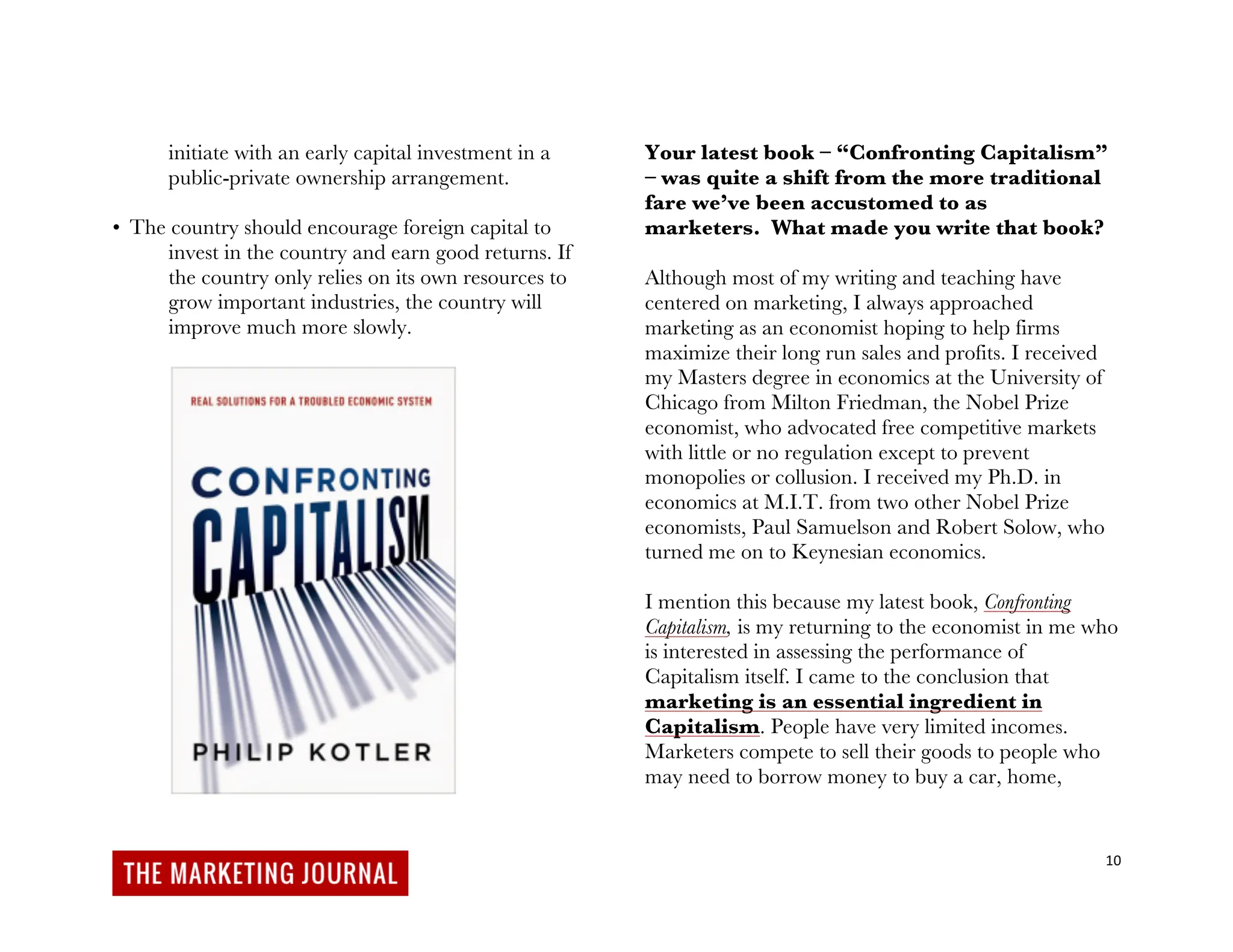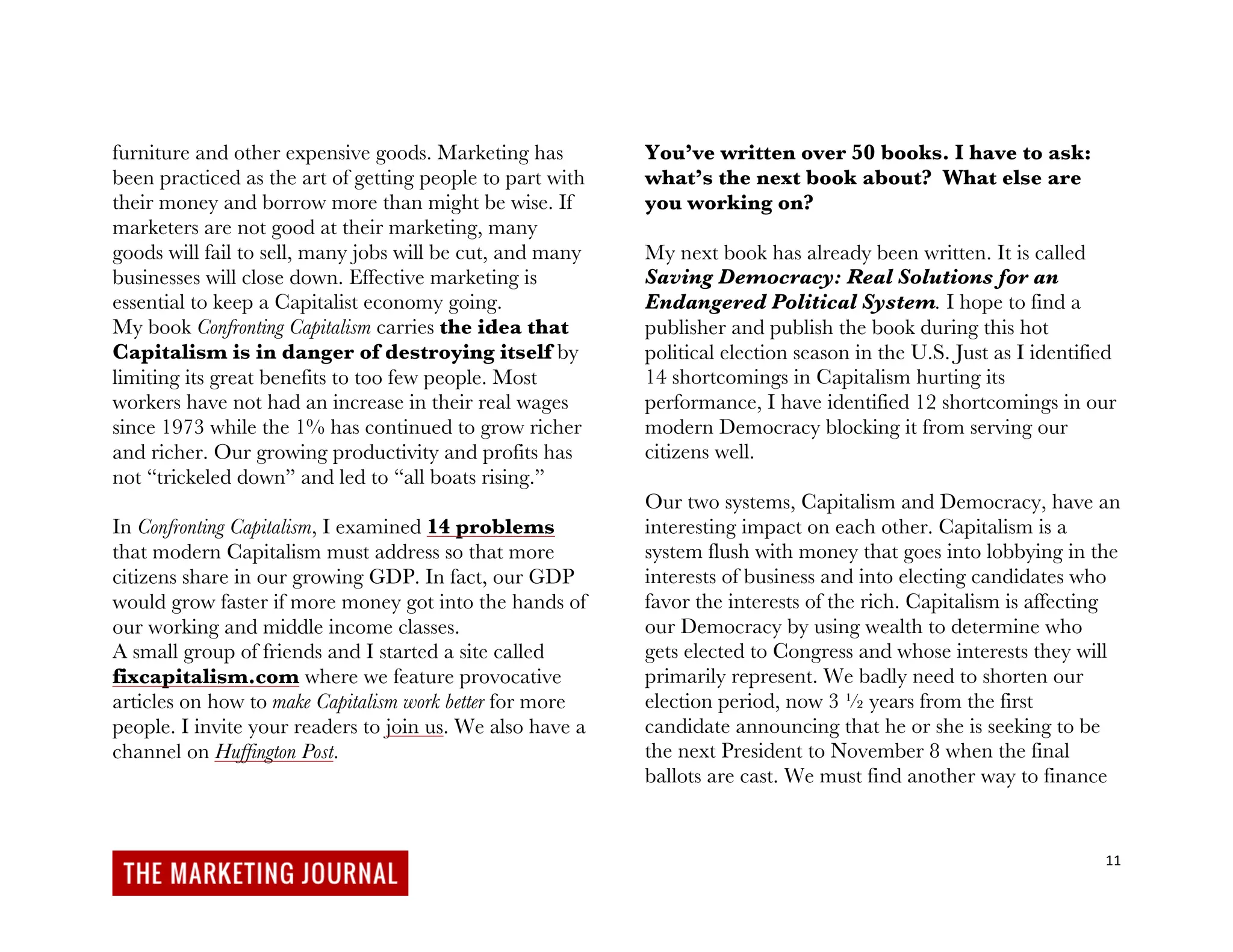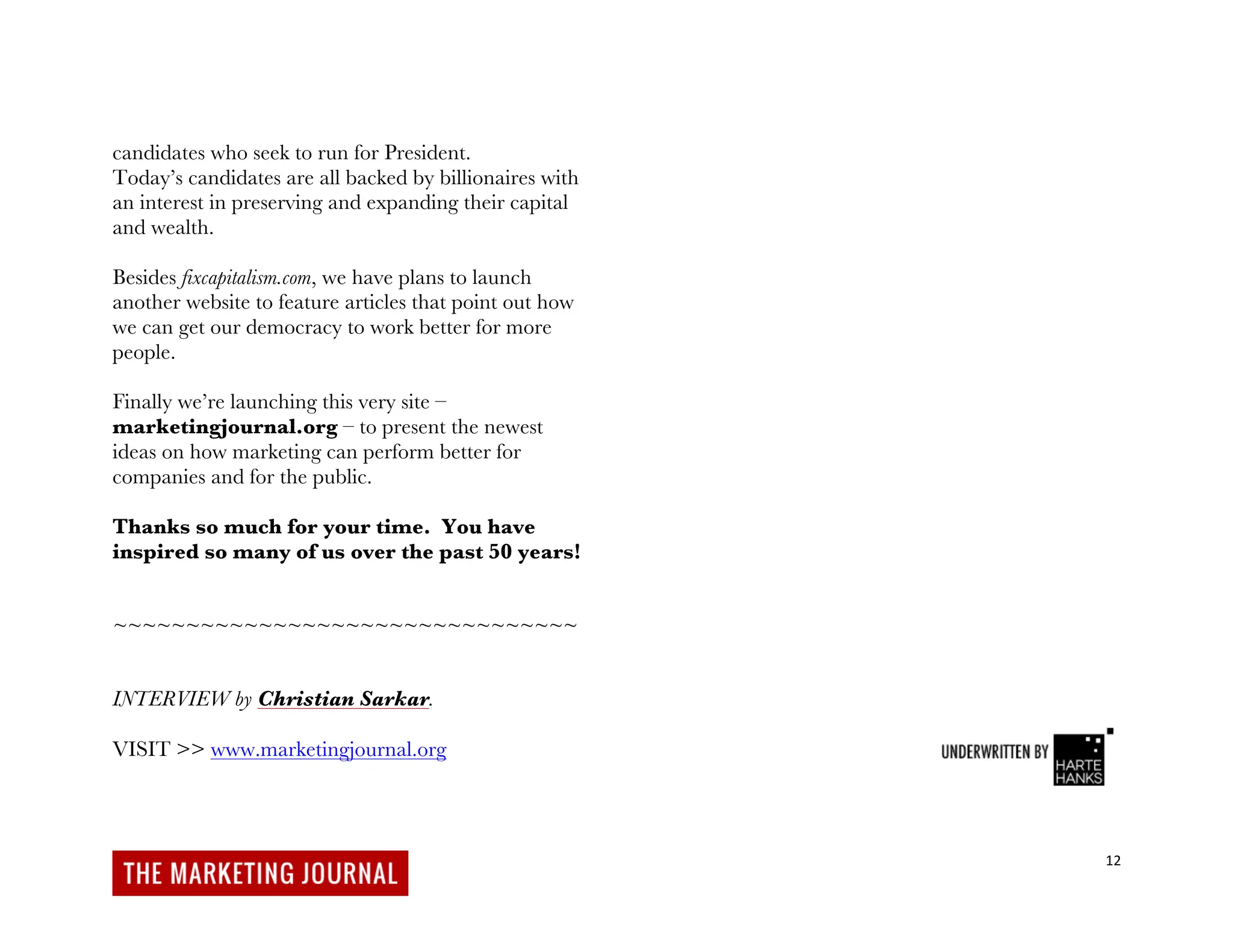This document provides an interview transcript with marketing expert Philip Kotler. Some key points:
- Kotler is known as the "father of modern marketing" for his influential marketing textbooks and articles over the past 50 years.
- He sees the biggest challenges for marketers today as adapting to the digital revolution and understanding unconscious consumer motivations. Marketing is shifting from mass marketing to more personalized approaches using big data.
- Kotler discusses how marketing and sales must better integrate in the digital age. Companies also need more innovation and focus on corporate social responsibility.
- Emerging markets should focus on free markets, competitive advantages, attracting foreign investment, and identifying industries for growth.
- Kotler's recent
